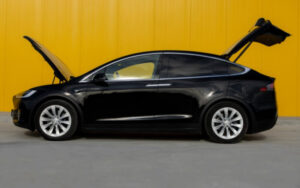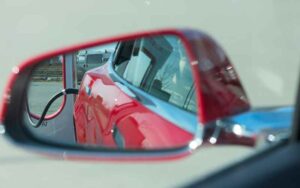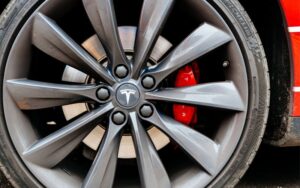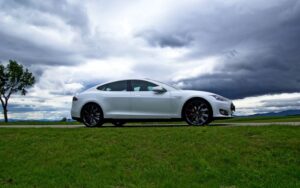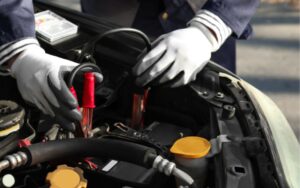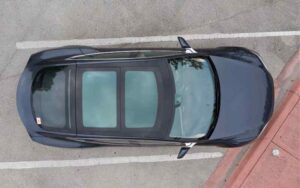This is What Happens When A Tesla Crashes!
Last updated on September 12th, 2023 at 03:03 am
Tesla manufactures top-quality safety-enhanced electric vehicles. People who can afford these vehicles prefer going for them due to their safety technology.
However, like every other vehicle, Teslas also get involved in accidents. These vehicles also experience crashes that can cause severe bodily damage and injuries.
But what happens to a Tesla when it crashes? Keep reading to get answers to this question and other related ones.
Tesla’s large crumple zone protects the drivers during a crash. The vehicles also deploy airbags to protect the vehicle’s occupants during an impact. In addition, the seatbelts system tightens them to keep the occupants in position. These features reduce the collision impact during the crash to ensure the occupants come out with minimal injuries.
In this article, I will explain what happens if a Tesla gets in an accident, the vehicle’s safety level in a crash, and the crash rate of a Tesla.
By the end, you’ll also know if Teslas are expensive to repair after a crash and their probability of crashing.
What Happens if a Tesla Gets in an Accident?
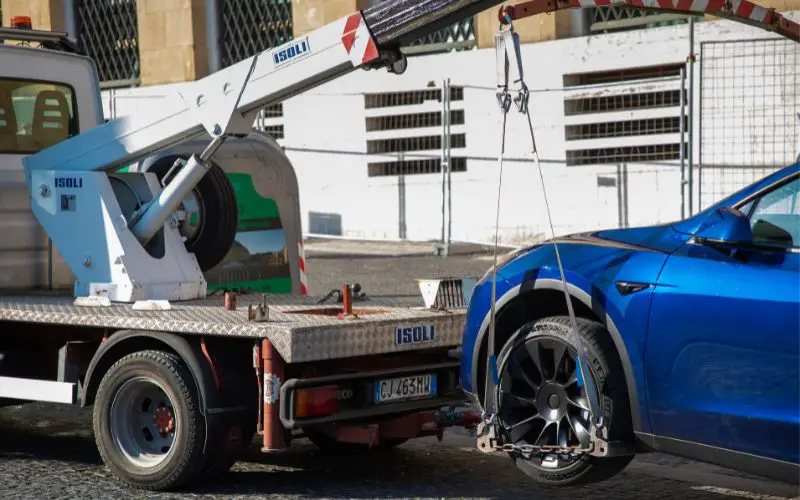
When a Tesla gets in an accident, there is a high chance of the driver and passenger(s) coming out unscathed or with minor injuries.
However, there may be a case of death or severe injuries if the accident is serious. The severity of casualties depends on the extent of the accident.
For example, a Tesla involved in a collision with another vehicle or obstacle may have a slight scratch or a crumpled appearance.
Most Tesla vehicles have a two or three-times larger crumple zone than conventional vehicles to keep drivers safe during a head-on collision.
This feature makes the collision impact feel less painful. The driver only feels the impact but no severe injury or pain.
In addition, the vehicle airbags will inflate when the collision impact exceeds deployment thresholds.
The airbags have sensors that deploy them depending on the severity of a crash.
When a Tesla gets in an accident, the airbags instantly inflate with force. A loud noise accompanies the inflation of the airbag.
The airbags and seat belts restrict the occupant’s movement during an accident to minimize injuries.
However, the front airbags may not inflate in some cases, such as underride collisions, minor front collisions, and small impacts with narrow items such as poles.
At the same time, they may not inflate when there is significant damage. So, the accident’s severity or the vehicle’s external appearance doesn’t determine the inflation of the front airbags.
Tesla vehicles’ airbags serve different purposes in protecting the occupants. Be rest assured that one or two may inflate immediately after a collision.
For instance, the curtain and seat-mounted side airbags on both sides will inflate if there is a severe side collision impact.
Additionally, the vehicle will deploy the curtain airbags if it rolls over, and the seat-mounted side airbags will inflate if there is a severe offset frontal impact.
Each Tesla vehicle airbag protects different body parts after an accident.
The table below outlines the different airbags in a Tesla vehicle and their purposes.
| Airbag Location | Purpose |
|---|---|
| Front airbags | Reduces injuries from frontal impact in the front seat |
| Seat-mounted side airbag in front seats | Shields the pelvis and thorax region of the body |
| Seat-mounted side airbag inside the driver’s seat | Protects the occupant’s head and torso |
| Curtain airbags | Protects the occupant’s head |
If your Tesla gets in an accident, there are some steps you need to take to alert the necessary authorities and repair the vehicle.
Below are the steps to take after a Tesla gets in an accident.
- Check for body injuries and contact the medical emergency for severe ones.
- If there are no casualties or serious injuries, call the police and file an official report before leaving the scene. You can also do this while waiting for an ambulance.
- Take a video and photo evidence of the accident.
- Go to the ER to see a doctor immediately after you leave the scene.
- Take the vehicle to a Tesla body shop.
- File a claim with your insurance company.
- Send the insurer a photo and video of the accident.
- Meet an adjuster in person.
- Fix the vehicle and get it back.
How Safe Are Teslas in a Crash?
Tesla’s design makes their vehicles safer in a crash than conventional vehicles. Each model has a safety system that protects the vehicle’s occupants during a crash.
Teslas are ten times safer on autopilot and 2.5 times safer without autopilot. The brand prioritizes safety while designing sustainable vehicles.
Horrible crash results have proven that occupants come out with little or no injuries.
Each Tesla Model features powerful onboard technology that helps protect the vehicle’s occupants and pedestrians on the road.
The Model 3, X, S, and Y got five stars on every safety test by the National Highway Traffic Safety Administration (NHTSA).
Also, Tesla recently introduced a Seat Belt System Enhancement, which uses an enhanced onboard camera system to detect an imminent crash.
The system then applies pressure on the seat belt to tighten it when the vehicle experiences a crash impact.
Furthermore, Tesla places their belief in improving safety through technology. They combine active safety, passive safety, and automated driver assistance in their vehicle’s engineering.
This combination ensures both the drivers and passengers are safe.
Other factors that make Teslas safe in a crash include:
- An incredibly crushable frunk with better impact energy absorption.
- The absence of flammable fluids helps prevent an explosion after impact.
- An automated crash avoidance system detects an inevitable crash and takes over the vehicle’s control to quickly swerve or brake.
What is the Crash Rate of a Tesla?
According to Tesla, in the 4th quarter of 2022, they recorded one crash for every 4.85 million miles driven in an autopilot-activated vehicle.
While vehicles driven without activating autopilot recorded one crash for every 1.45 million miles.
Over the years, the crash rate of Teslas reduced drastically due to the new invention of better safety technology.
There was an initial fear of electric vehicles crashing more due to their autopilot features, making the driver concentrate less on the road.
Thankfully, the manufacturer’s priority on safety has countered that fear. Many drivers find it safer to drive a Tesla these days.
Are Teslas Expensive to Repair After a Crash?
Yes, Teslas are expensive to repair after a crash. The repair cost is usually almost equal to or close to the vehicle’s initial price.
However, the repair cost varies according to the level of damage after the crash. It could be lesser if it were just a minor scratch.
You can only determine how much you will spend repairing the vehicle once you take it to the body shop and they check it.
Nonetheless, the cost of repairing a crashed Tesla is higher than conventional vehicles.
In addition, Tesla owners believe that the insurance company should be able to pay the cost, but the case is different.
Many top insurance companies are beginning to write off low-mileage models and put them up for auction because of their high repair costs.
Insurers mostly total the crashed vehicle and reimburse the owner whenever the estimated repair cost is higher than the actual cash value of the electric vehicle.
So, even though an insurance company cannot pay for the high cost of repair of a crashed Tesla, they do their best to settle the owner one way or the other.
Are Tesla Owners Less Likely to Crash?
Tesla vehicles are less likely to crash; when they do, there are few or no casualties. Their vehicle’s design ensures the system detects and avoids crashes.
In addition, a study by Cambridge Mobile Telematics proved that Tesla drivers are 50% less likely to crash while driving a Tesla compared to other vehicles.
This study further shows that drivers’ behaviors towards safety change while driving a Tesla compared to when the same driver drives a conventional vehicle or another EV.
The behavioral change contributes to the reason the crash rate of a Tesla is lesser. Safety-conscious drivers and safe vehicles are less likely to have an accident.
However, environmental factors and other circumstances can make the vehicle crash, irrespective of its enhanced safety system.
These factors include reduced daylight, bad roads, heavy fog, rain, and other extreme weather conditions. It could also be due to an initial fault in the vehicle.
Hence, paying attention to your Tesla and fixing any underlying issues before taking it on the road is essential.
Apart from this, Tesla vehicles always come in perfect condition, making them less likely to crash.

Hey, I’m Michael Davis, a 35-year-old with a degree and a love for cars and tech. Since I was a kid, cars have been my thing—so much that I even thought they ran on magic beans! Fast forward, and I’ve built Vehicle Army, your one-stop-shop for easy-to-understand car facts.

